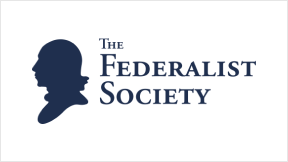Facts of the Case
The Clean Air Act (the Act) required states that had not yet achieved national air quality standards to establish a permit program regulating new or modified major stationary sources of air pollution, such as manufacturing plants. The Environmental Protection Agency (EPA) passed a regulation under the Act that allows states to treat all pollution-emitting devices in the same industrial grouping as though they were a single “bubble”. Using this bubble provision, plants may install or modify one piece of equipment without needing a permit if the alteration does not increase the total emissions of the plant. Several environmental groups, including the Natural Resources Defense Council, challenged the bubble provision as contrary to the Act. The U.S. Court of Appeals for the D.C. Circuit set aside the EPA regulation as inappropriate for a program enacted to improve air quality.
Questions
Does the Clean Air Act permit the EPA to define the term "stationary source" to mean whole industrial plants only, which allows plants to build or modify units within plants without the permit required under the Act?
Conclusions
-
Yes. Justice John Paul Stevens, writing for a unanimous court, reversed. The Supreme Court held that the bubble regulation was a reasonable interpretation of the term “stationary source” in the Clean Air Act. Congress did not have a specific intention for the interpretation of that term, and the EPA’s regulation was a reasonable policy choice. The regulation also provided reasonable accommodations for the many competing interests affected by the Act. Justices Thurgood Marshall, William H. Rehnquist, and Sandra Day O’Connor did not participate.
Chevron—Complicated, Start to Finish
Federalist Society Review, Volume 23
A Review of Thomas W. Merrill, The Chevron Doctrine: Its Rise and Fall, and the...
Revitalizing the Nondelegation Doctrine
Federalist Society Review, Volume 23
A Review of The Administrative State Before the Supreme Court: Perspectives on the Nondelegation Doctrine (Peter...
And the Walls Came Tumbling Down: The Liberation of Civil Society
As anyone who has seen a building collapse or a bridge buckle can attest, it...
Is Glacier Northwest the Tip of the Iceberg?
Glacier Northwest created no new doctrine. But it may still signal a new direction for labor law.
Nowadays, labor-law cases are a rare sight at the Supreme Court. The Court usually takes...
Is the Administrative State Inevitable? Loper, Chevron, and the “Abnegation” of Law
Last month, the Supreme Court granted cert in Loper Bright Enterprises v. Raimondo. Though the case...
What Do the NLRB’s Administrative Law Judges’ Decisions Tell Us About the Fairness of the Board’s Procedures?
Twenty-three of the National Labor Relations Board’s 36 Administrative Law Judges (64%) were Board attorneys...
Noncompetes, Overtime, and the Status Quo: How Agency Rulemaking Distorts Federal Policy and Why Only Courts Can Fix It
Last week was a busy one for the Biden administration. It issued a raft of...
Some Thoughts on NTIA’s New “Artificial Intelligence Accountability Policy Report”
After years of exploring the idea in science fiction, new advances in Artificial Intelligence (AI)...
Has Chevron Step One Stepped to Center Stage?
Unanimous Supreme Court rulings are always less likely to generate headlines. So, in a term...
Why Scalia Was Wrong About Chevron
Not since the New Deal era has the scope and reach of the modern administrative...
Chevron, The Nondelegation Doctrine, and Tobacco
Administrative Law Practice Group Newsletter - Volume 3, Issue 1, Spring 1999
Federalist Society members tend to applaud the Supreme Court's Chevron doctrine,1 because it seeks to...
The Major Questions Doctrine: West Virginia v. EPA
National Lawyers Conference 2022
The Mayflower Hotel1127 Connecticut Ave NW
Washington, DC 20006
Should The Chevron Doctrine Stand?
Chevron v. NRDC (1984) and subsequent precedents held that courts should defer to agency interpretations of ambiguous statutes. This judicial deference to administrative agencies, often called Chevron Deference has been a topic of great debate. Two experts, Mark Chenoweth and Ronald Levin, took on this debate via a variety of mediums -blogs, videos, etc. while additional experts chimed in with Amicus Briefs, culminating in an audience vote on which side convinced them.
















